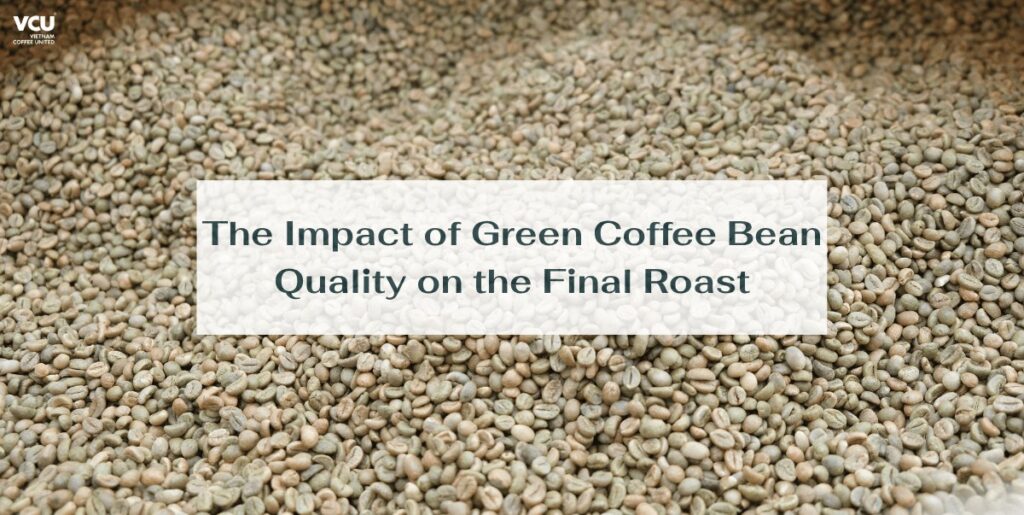Chemical Changes During Coffee Roasting
Coffee roasting is the process of applying heat to transform green coffee beans into roasted coffee beans. During coffee roasting, the beans are exposed to hot air, which causes water to evaporate and deeply alters their microstructure, while also triggering widespread chemical reactions. This process creates appealing flavor compounds, resulting in a delightful cup of coffee. In this article, VCU will summarize the changes that occur during roasting for the readers.
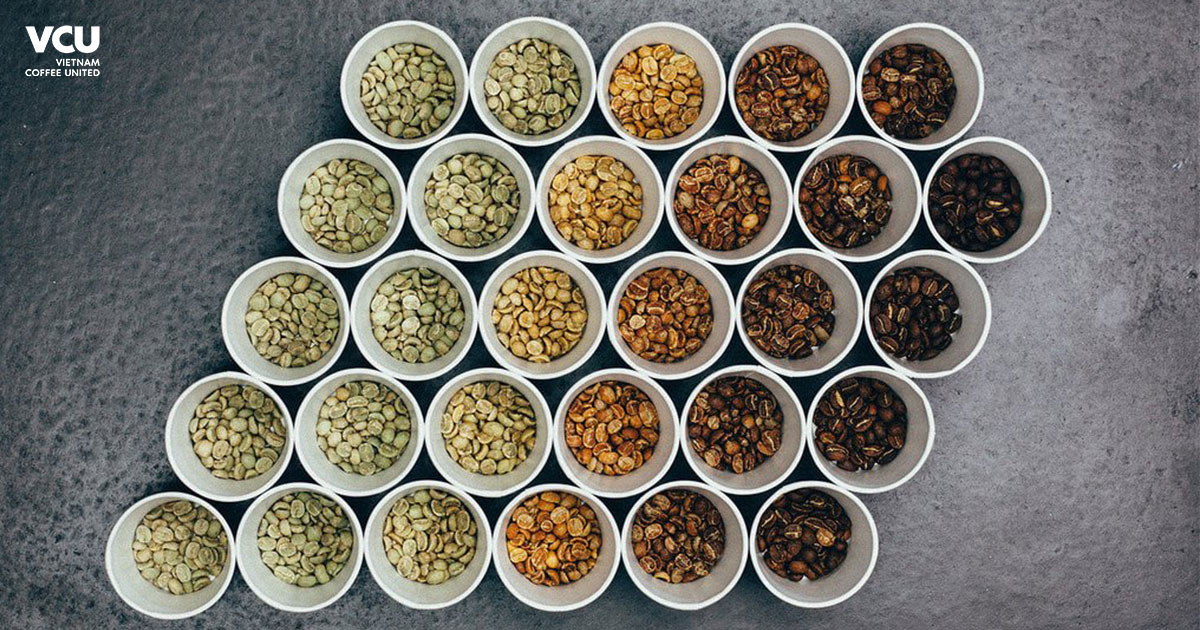
Key Chemical Reactions in Coffee Roasting
All reactions involving coffee in the roaster are known as pyrolysis (endothermic reactions). These transformations occur when organic materials are heated, producing volatile compounds and leaving behind carbon residue (also known as charcoal). During coffee roasting, it’s crucial to avoid overheating the beans, as this could cause burning. However, they still need to undergo chemical changes through pyrolysis to develop flavor compounds.
The Maillard Reaction
The Maillard reaction is not just one reaction but a group of important reactions that create the characteristic flavors and colors. Named after French doctor Louis Camille Maillard, who first described them in 1910, these reactions begin in the roaster at temperatures between 140°C and 160°C. Heat triggers a reaction between carbohydrates and amino acids in the coffee beans, which changes their color, flavor, and nutritional content. When the temperature exceeds 170°C, caramelization reactions begin, burning off any remaining sugars.
The color change is due to the production of melanoidins, which are large molecules that not only turn the coffee beans brown but also contribute to their savory taste. Small changes in temperature and time during the Maillard reaction can affect the final composition of the coffee.
The Maillard reaction easily occurs in foods that are heat-treated and stored at room temperature for long periods. Furthermore, Maillard is also linked to other biochemical reactions, such as lipid oxidation, which can reduce coffee quality when stored for extended periods.
Coffee that undergoes longer Maillard reactions may increase viscosity, while shorter reactions may create perceptions of sweetness and acidity. During roasting, the Maillard reaction forms melanoidins—dark brown compounds with roasted, malty, bitter, and burnt flavors—that play a key role in forming and stabilizing the crema during espresso extraction.
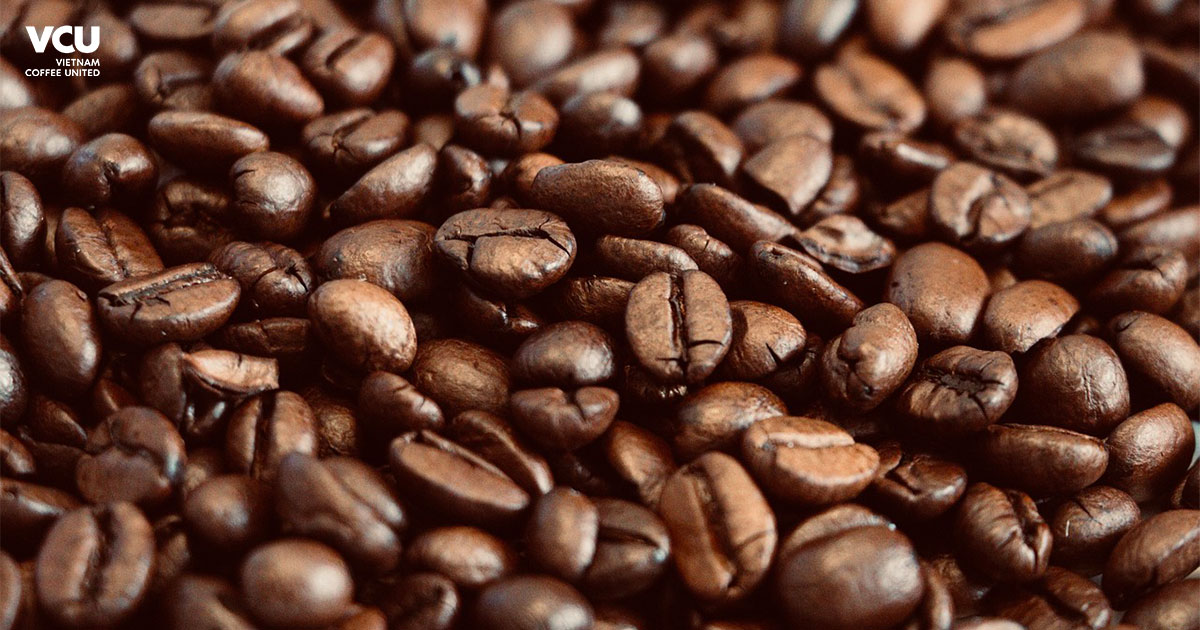
Strecker Degradation
Strecker degradation is a process dependent on the Maillard reaction. Amino acids react with carbonyl groups to create compounds such as aldehydes and ketones. These compounds play a vital role in forming aroma and flavor.
Caramelization Reaction
At 170°C, thermal caramelization occurs. The high temperature breaks down long, complex carbohydrate chains into hundreds of smaller, new compounds that add significant bitterness, acidity, and aromas. Caramelization contributes to the sweetness in coffee aromas, such as caramel and almond.
This reaction continues until the roasting process ends. Dark roasting breaks down nearly 99% of the inherent sucrose in the beans, while light roasting reduces around 87%. The destruction of sugar in coffee leads to the formation of long-chain polymers and short volatile compounds with complex flavors.
It’s important to note that sucrose content not only contributes to sweetness and body after roasting but also affects acidity. This is because the caramelization of sugar produces acetic acid. Therefore, we encourage farmers to harvest ripe coffee cherries with the highest sugar content to provide ample raw materials for the Maillard and caramelization reactions.
However, it’s also essential to understand that each sugar requires different temperatures to participate in reactions.
Acid Decomposition
Although many coffee drinkers believe that acids make coffee bitter and unpleasant, the reality is that without acid, coffee would actually be dull. The presence of acidity brings liveliness, subtlety, and richness to coffee.
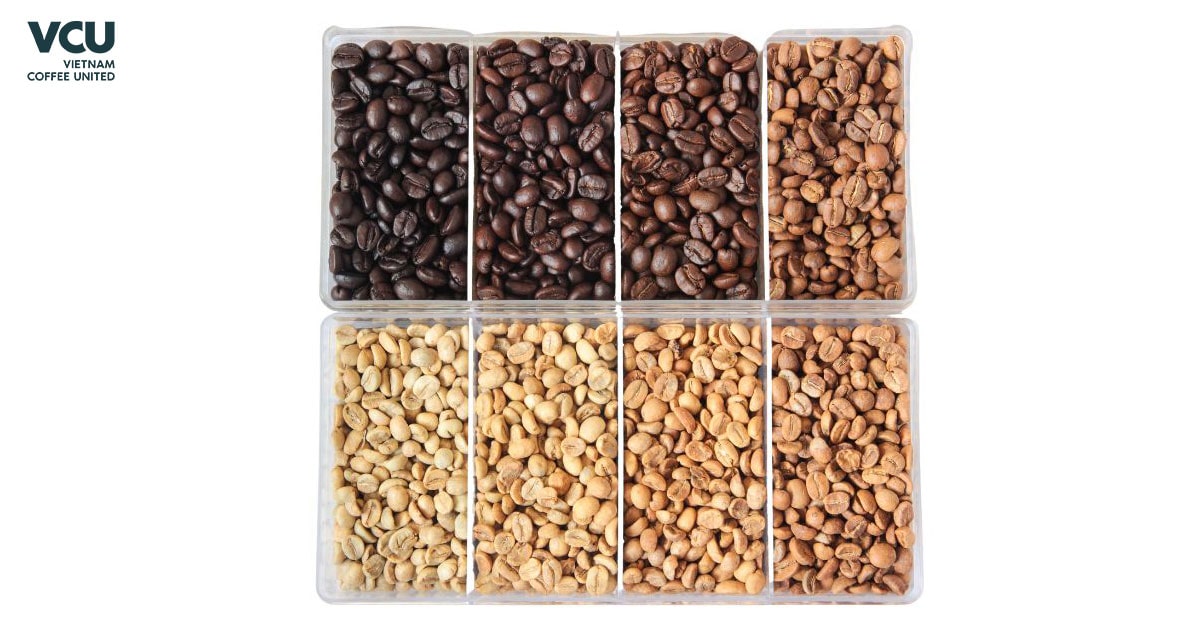
Formation of Volatile and Non-Volatile Compounds
Volatile compounds are responsible for aroma, while non-volatile compounds contribute to flavor.
Volatile Compounds
A few minutes after roasting begins, the official coffee aroma is formed. The rapid increase in volatile compounds occurs when coffee moisture drops below 5%. At this point, the Maillard, caramelization, and amino acid, sugar, and lipid transformations together contribute to the development of volatile compounds, including:
- Aldehydes: fruity, green aromas.
- Furans: contribute to caramel notes.
- Pyrazines: earthy aroma.
- Sulfur compounds like 2-furfurylthiol create the distinctive “roasted coffee aroma.” However, some other sulfur compounds, like methanethiol, are less pleasant.
- Guaiacol: smoky, spicy notes.
CO2 is a volatile compound that doesn’t contribute to aroma but plays a role in the overall body of the coffee and the crema in espresso.
It’s worth noting that aroma content peaks at light to medium roasts. Beyond this, darker roasts and higher temperatures will destroy the aromas created, as weaker cellulose structures reduce their ability to retain aromatic compounds.
Non-Volatile Compounds
Non-volatile compounds remain stable at room temperature, meaning they don’t evaporate, and some may change during roasting. Most non-volatile compounds contribute to the coffee’s flavor.
For example, caffeine is responsible for bitterness, sucrose for sweetness, and lipids for body and richness.
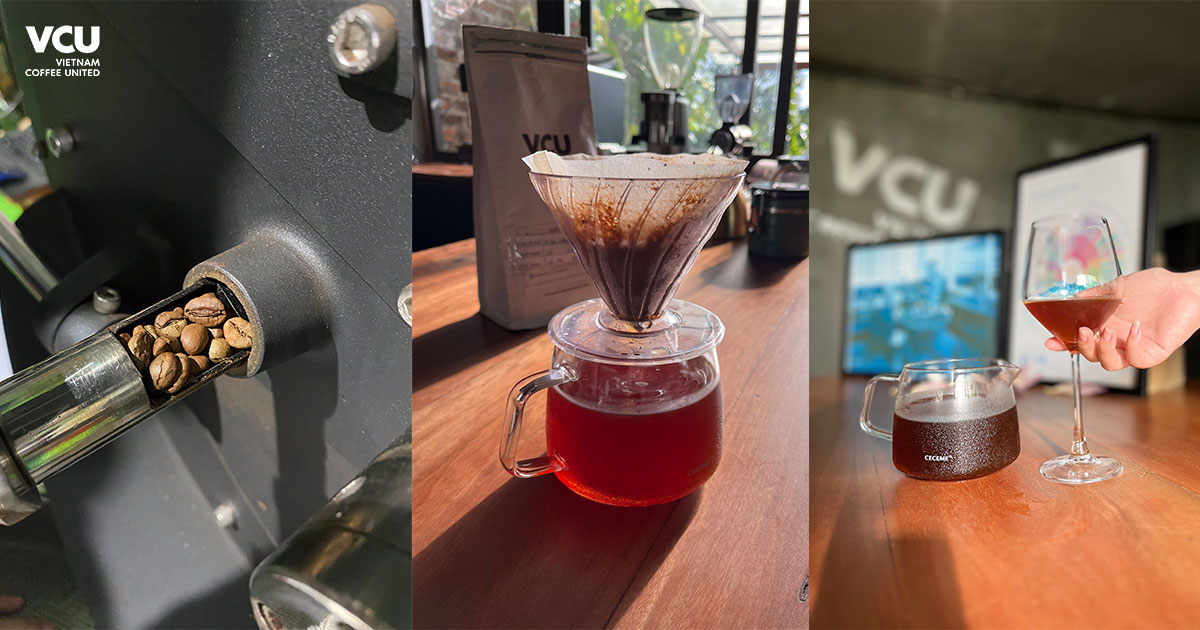
Note: Caffeine does not change during roasting.
The coffee roasting process involves several chemical reactions that create the flavor, aroma, and body of the coffee. Understanding these reactions will help you standardize the roasting process and know what to do next to improve your roast batch.
Contact Information
VCU Joint Stock Company (VCU JSC)
Address:
– Roasting Facility: Residential Group 6, Chu Prong Town, Chu Prong District, Gia Lai Province
– Green Bean Facility: Ia Der Commune, Ia Grai District, Gia Lai Province
– Hotline: +84 941 203 879
– Fanpage: VCU – Vietnam Coffee United
– Email: info@vietnamcoffeeunited.com

